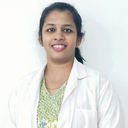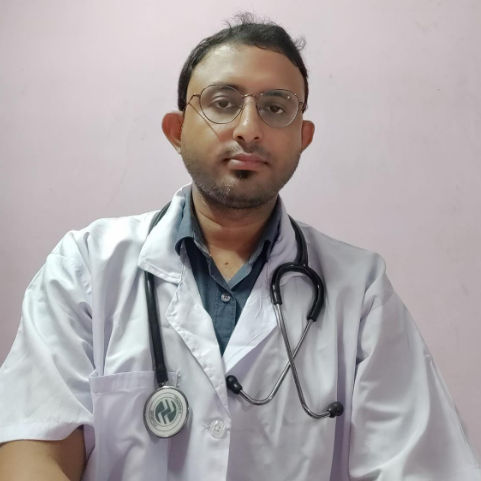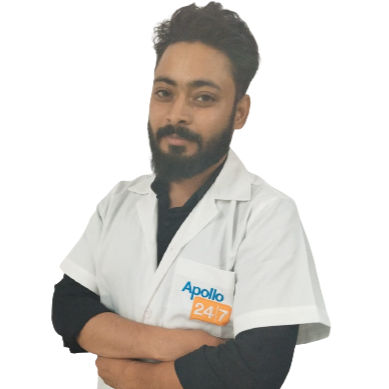Cystic acne is a severe condition of acne that affects individuals of all ages, though it is most normally seen in teenagers and young adults. It occurs when cysts form beneath the skin, resulting in large, painful, and inflamed lumps. While acne is generally associated with puberty, cystic acne can continue into adulthood or can even develop later in life. Understanding the causes, symptoms, treatment options, and prevention methods for cystic acne can help individuals manage and treat this often distressing skin condition.
What is Cystic Acne?
It is a type of inflammatory acne which causes deep, painful breakouts beneath the skin’s surface. It is often larger and more severe than typical acne pimples. The term "cystic" refers to the existence of cysts—large, pus-filled lumps which are formed when clogged pores become infected and inflamed.
Cystic acne can be more difficult to treat than regular acne because it affects more profound layers of the skin. If not appropriately treated, cystic acne often leads to scarring. Unlike mild acne, which may consist of whiteheads, blackheads, or small pimples, cystic acne can cause significant discomfort and leave lasting marks.
Causes of Cystic Acne
The development of cystic acne is complex and impacted by different factors. Following are the main contributors to it:
1. Excess Sebum Production
The skin’s sebaceous glands make oil, called sebum, to keep the skin lubricated. When too much sebum is created, it may mix with dead skin cells to clog pores, which creats an environment where bacteria can thrive and form cystic acne.
2. Hormonal Imbalances
Hormones play a significant role in acne development, particularly androgens, which are male hormones present in both men and women. Androgens increase the size and activity of sebaceous glands, leading to excess oil production. Hormonal changes in puberty, menstruation, pregnancy, and polycystic ovary syndrome (PCOS) can trigger or worsen cystic acne.
3. Bacterial Growth
The skin naturally contains a type of bacteria known as Propionibacterium acnes. When pores become clogged, these bacteria multiply and cause inflammation, which can lead to the development of cystic acne. The deeper the blockage, the more severe the infection.
4. Genetics
Past history of acne in the family can make individuals more prone to developing cystic acne. If your parents or close relatives suffer from severe acne, you may be at a higher risk.
5. Stress
Stress can exacerbate acne, including cystic acne. Stress leads to the release of cortisol, a hormone that can increase oil production and inflammation in the skin, triggering breakouts.
6. Medications and Skincare Products
Certain medications, such as steroids and harsh skincare products, can increase the likelihood of developing cystic acne. Choose a non-comedogenic (non-pore-clogging) product to reduce the risk.
7. Dietary Factors
High-glycemic foods (such as sugary snacks and refined carbohydrates) and dairy products can contribute to acne flare-ups. A balanced diet rich in whole foods and antioxidants may help manage skin health.
Symptoms of Cystic Acne
Several distinct signs and symptoms characterise cystic acne:
Large, Painful Pimples: Cystic acne typically appears as deep, inflamed lumps that are tender to the touch. These lumps can grow large and become red or purple.
Pus-filled Cysts: Cysts form beneath the surface of the skin, and over time, they may fill with pus. These cysts can be quite painful, especially if they rupture.
Inflammation and Swelling: The affected areas of the skin become swollen and red, creating an unsightly appearance.
Scarring: Cystic acne can lead to scarring if it is not treated or managed properly. These scars can be difficult to remove and may last long after the acne has healed.
Occasional Pustules: In some cases, cystic acne may develop alongside smaller pimples, blackheads, or whiteheads.
Treatment for Cystic Acne
The severity of cystic acne often requires medical intervention. There are various treatment options available, from over-the-counter remedies to prescription medications. Here are some common and effective treatments:
1. Topical Retinoids
Topical retinoids, derived from Vitamin A, are often used to treat cystic acne. They help prevent pores from becoming clogged, reduce inflammation, and promote cell turnover. Common retinoids include adapalene (Differin) and tretinoin (Retin-A). These treatments can take time to show results and may initially cause dryness or irritation.
2. Oral Antibiotics
Oral antibiotics can help to decrease inflammation and reduce bacterial growth in cases where bacteria are a significant factor. Doxycycline, minocycline, and tetracycline are frequently prescribed to individuals with cystic acne.
3. Oral Contraceptives (Birth Control Pills)
For women, hormonal birth control pills can regulate the hormones that contribute to acne. Certain types of oral contraceptives, particularly those containing estrogen and progestin, can reduce sebum production and lower the incidence of breakouts.
4. Isotretinoin (Accutane)
Isotretinoin is a powerful oral medication often reserved for severe cases of cystic acne that do not respond to other treatments. It reduces oil production, shrinks sebaceous glands, and decreases inflammation. While effective, isotretinoin has significant side effects, including potential congenital disabilities, and requires close monitoring by a healthcare provider.
5. Corticosteroid Injections
For large, painful cysts, a doctor may inject a corticosteroid directly into the cyst to reduce inflammation and promote faster healing. This treatment can help alleviate pain and prevent scarring.
6. Laser and Light Therapy
Some dermatologists use laser treatments or light therapy to reduce inflammation, kill bacteria, and promote healing. These treatments can be effective in treating severe cystic acne, though multiple sessions may be necessary.
7. Chemical Peels
Chemical peels involve applying a chemical solution to the skin, which helps exfoliate the surface layer and clear clogged pores. Regular chemical peels improve the appearance of acne and reduce cystic breakouts.
8. Topical Antibiotics
For milder cases of cystic acne, topical antibiotics like clindamycin or benzoyl peroxide may help reduce bacterial growth and inflammation. These are often combined with other treatments, like retinoids, for better results.
Preventing Cystic Acne
While cystic acne cannot always be prevented, there are several strategies to help reduce the risk of flare-ups and manage the condition more effectively:
1. Establish a Gentle Skincare Routine
Wash your face twice a day with a mild, noncomedogenic cleanser. Avoid harsh scrubs or cleansers that can irritate the skin and exacerbate acne. Regular exfoliation with gentle products can help remove dead skin cells and prevent clogged pores.
2. Avoid Touching Your Face
Frequently touching your face can transfer dirt, oil, and bacteria to your skin, potentially triggering breakouts. Be mindful of this habit, especially when you’re using your hands during the day.
3. Use Non-Comedogenic Products
Choose skincare and makeup products that are labeled as "non-comedogenic," meaning they won’t clog pores. Look for products that are oil-free and specifically formulated for acne-prone skin.
4. Maintain a Healthy Diet
Eating a well-balanced diet that is rich in vitamins, antioxidants, and omega-3 fatty acids may help improve overall skin health. Avoid excessive consumption of sugary foods and processed carbohydrates that may contribute to acne flare-ups.
5. Manage Stress
Since stress can worsen acne, finding effective stress management techniques like exercise, meditation, or deep breathing exercises can help reduce flare-ups.
6. Get Enough Sleep
Sleep is essential for the body’s repair processes. Aim for 7-9 hours of sleep per night to promote skin health and support overall well-being.
7. Consult a Dermatologist
If you have persistent or severe cystic acne, it’s essential to consult a dermatologist. They can recommend appropriate treatment plans and provide guidance on managing the condition.
Conclusion
Cystic acne is a severe and often distressing skin condition that requires a comprehensive approach to treatment and prevention. By understanding the causes, symptoms, and available treatment options, individuals affected by cystic acne can take proactive steps to manage their condition and improve their quality of life. If you or someone you know is struggling with cystic acne, seeking professional help from a dermatologist is essential for effective management and to prevent long-term complications.
Consult Top Dermatologist

Dr. Hemalatha Naidu M
Dermatologist
5 Years • MBBS, MD (Dermatology)
Bangalore
Apollo 24|7 Virtual Clinic - Karnataka, Bangalore
(150+ Patients)

Dr Ritika Shanmugam
Dermatologist
6 Years • MBBS, MD (Dermatology, venereology, Leprosy)
Bangalore
Apollo 24|7 Virtual Clinic - Karnataka, Bangalore

Dr. K Chetana
Dermatologist
13 Years • MBBS, MD ( Dermatology)
Hyderabad
Apollo 24|7 Virtual Clinic - Telangana, Hyderabad
(25+ Patients)

Dr. Madhab Datta
Dermatologist
5 Years • MBBS, MD (DVL)
Kolkata
Dr. Madhab Datta's Clinic, Kolkata

Dr. Himadri Sinha
Dermatologist
6 Years • BDS, FMC
New Town
AESTHETICAROOTS, New Town
Consult Top Dermatologist

Dr. Hemalatha Naidu M
Dermatologist
5 Years • MBBS, MD (Dermatology)
Bangalore
Apollo 24|7 Virtual Clinic - Karnataka, Bangalore
(150+ Patients)

Dr Ritika Shanmugam
Dermatologist
6 Years • MBBS, MD (Dermatology, venereology, Leprosy)
Bangalore
Apollo 24|7 Virtual Clinic - Karnataka, Bangalore

Dr. K Chetana
Dermatologist
13 Years • MBBS, MD ( Dermatology)
Hyderabad
Apollo 24|7 Virtual Clinic - Telangana, Hyderabad
(25+ Patients)

Dr. Madhab Datta
Dermatologist
5 Years • MBBS, MD (DVL)
Kolkata
Dr. Madhab Datta's Clinic, Kolkata

Dr. Himadri Sinha
Dermatologist
6 Years • BDS, FMC
New Town
AESTHETICAROOTS, New Town
